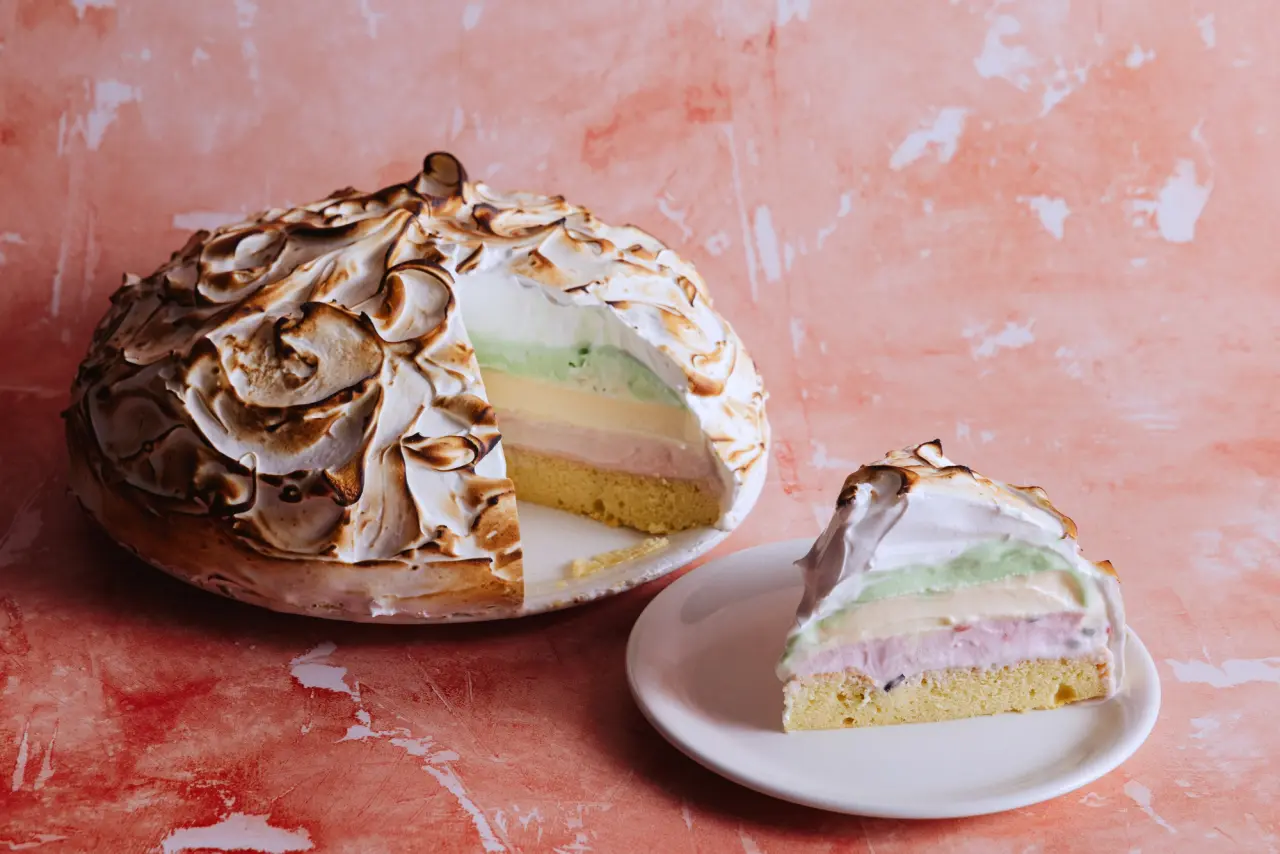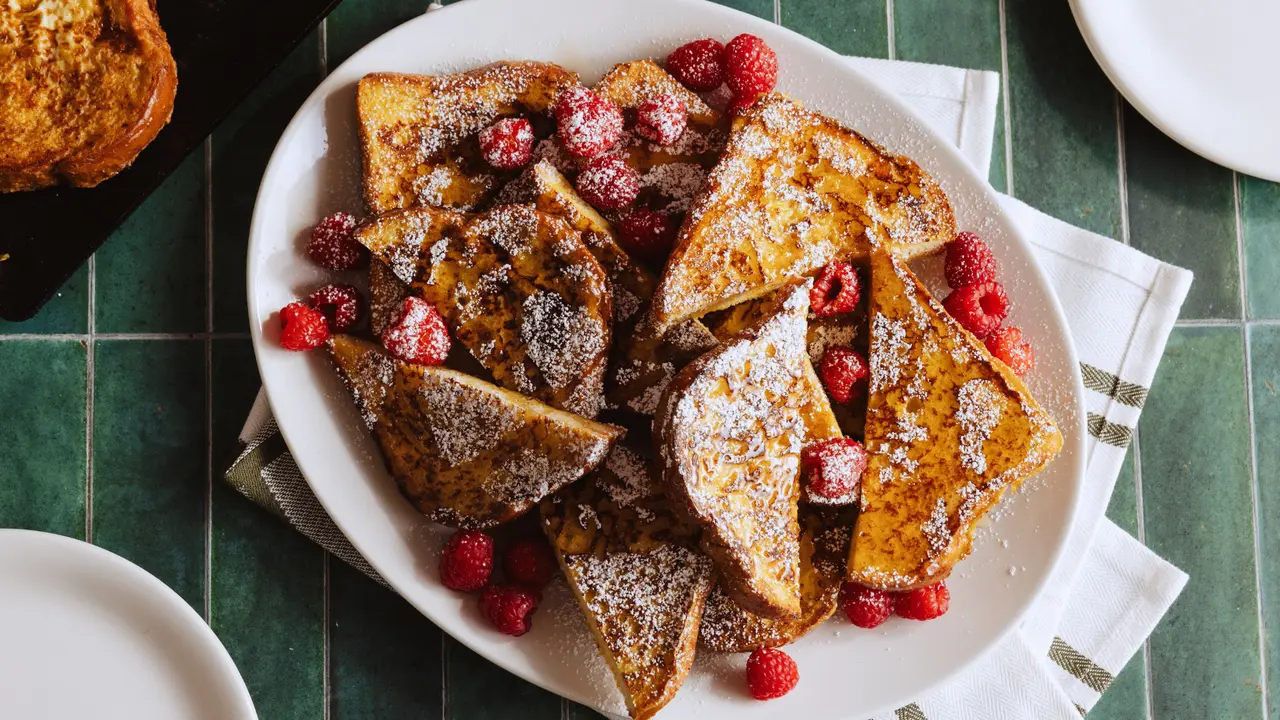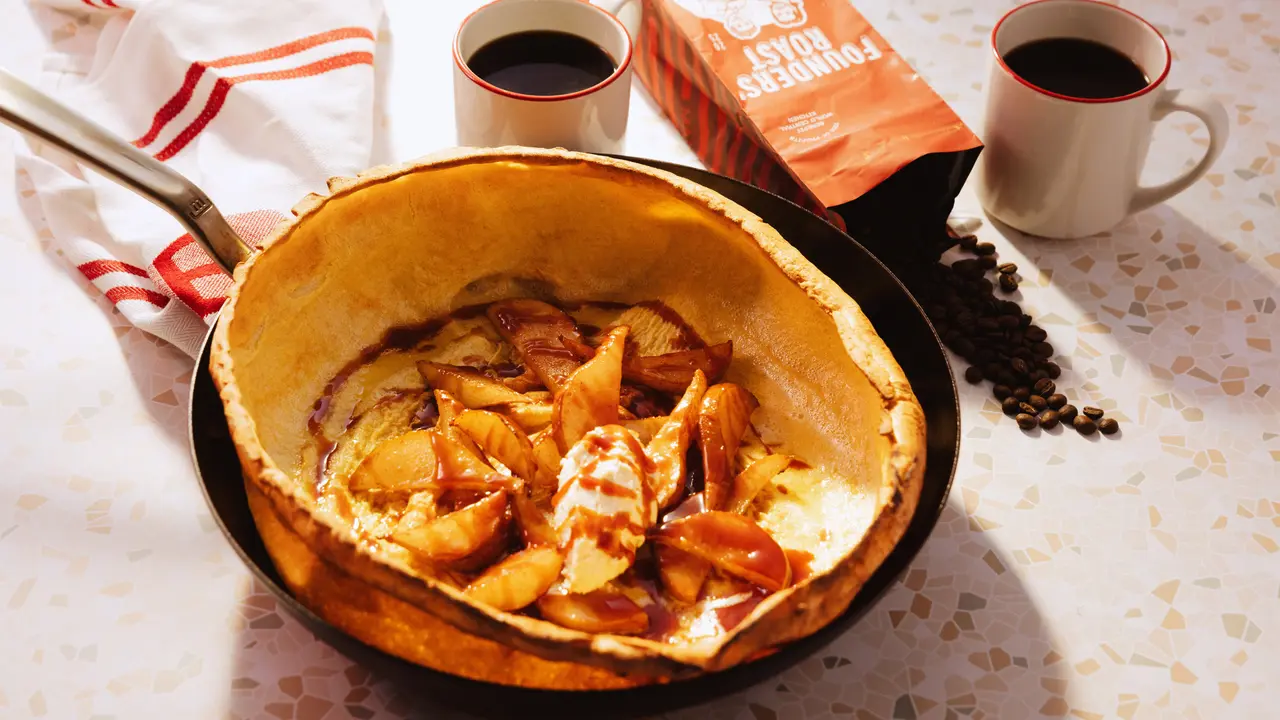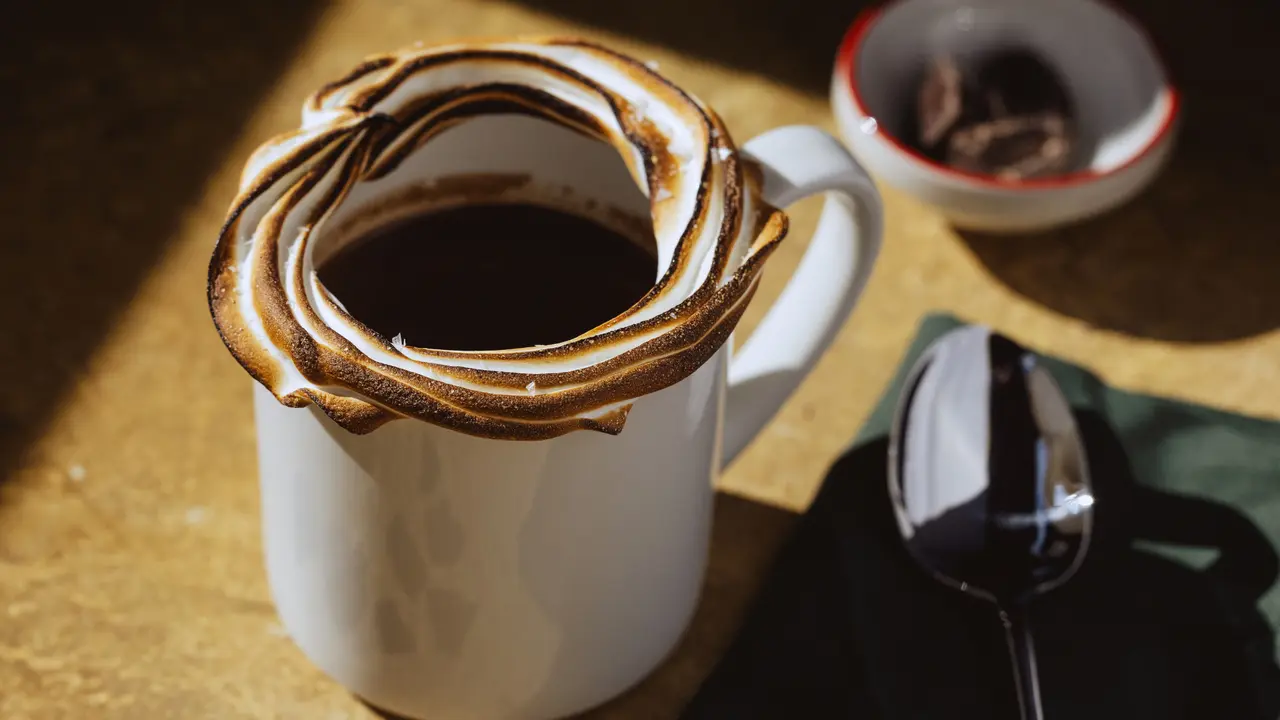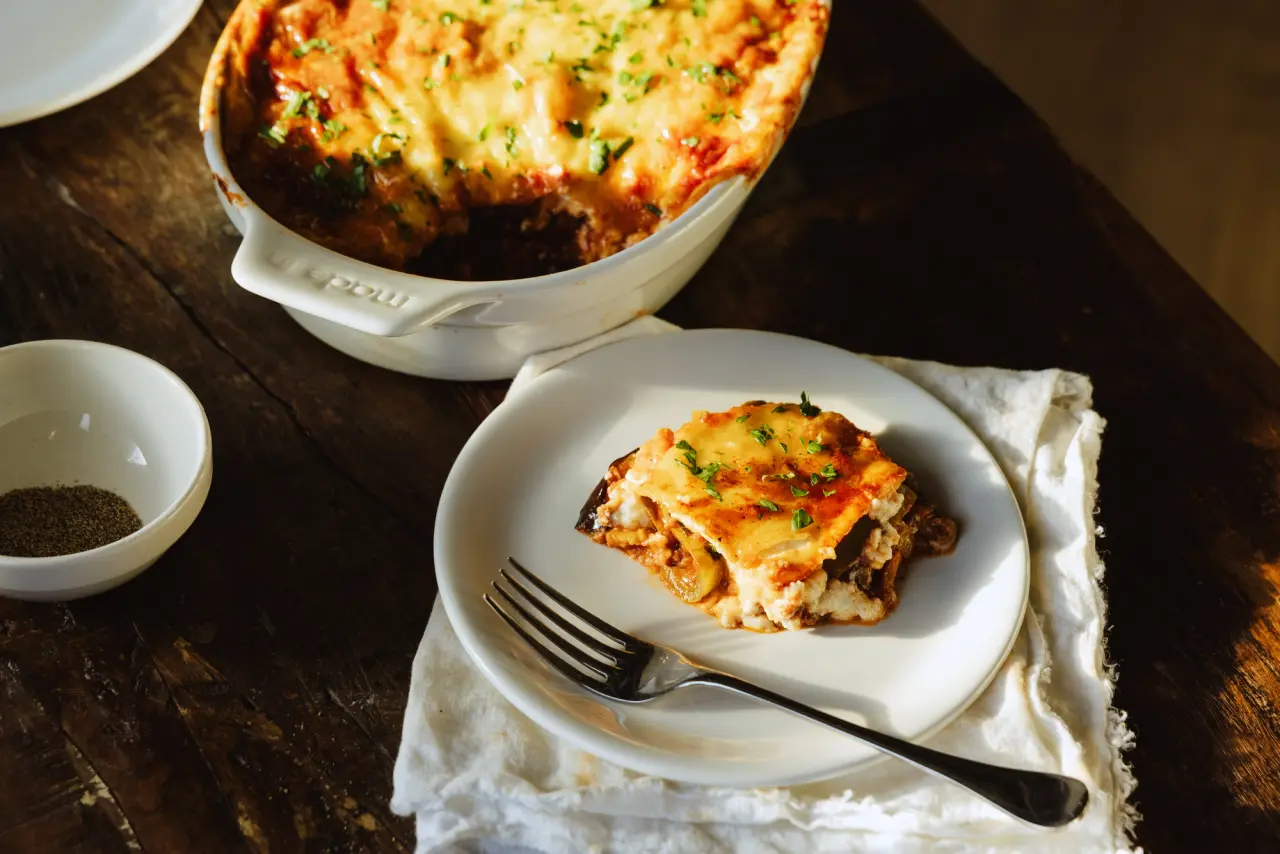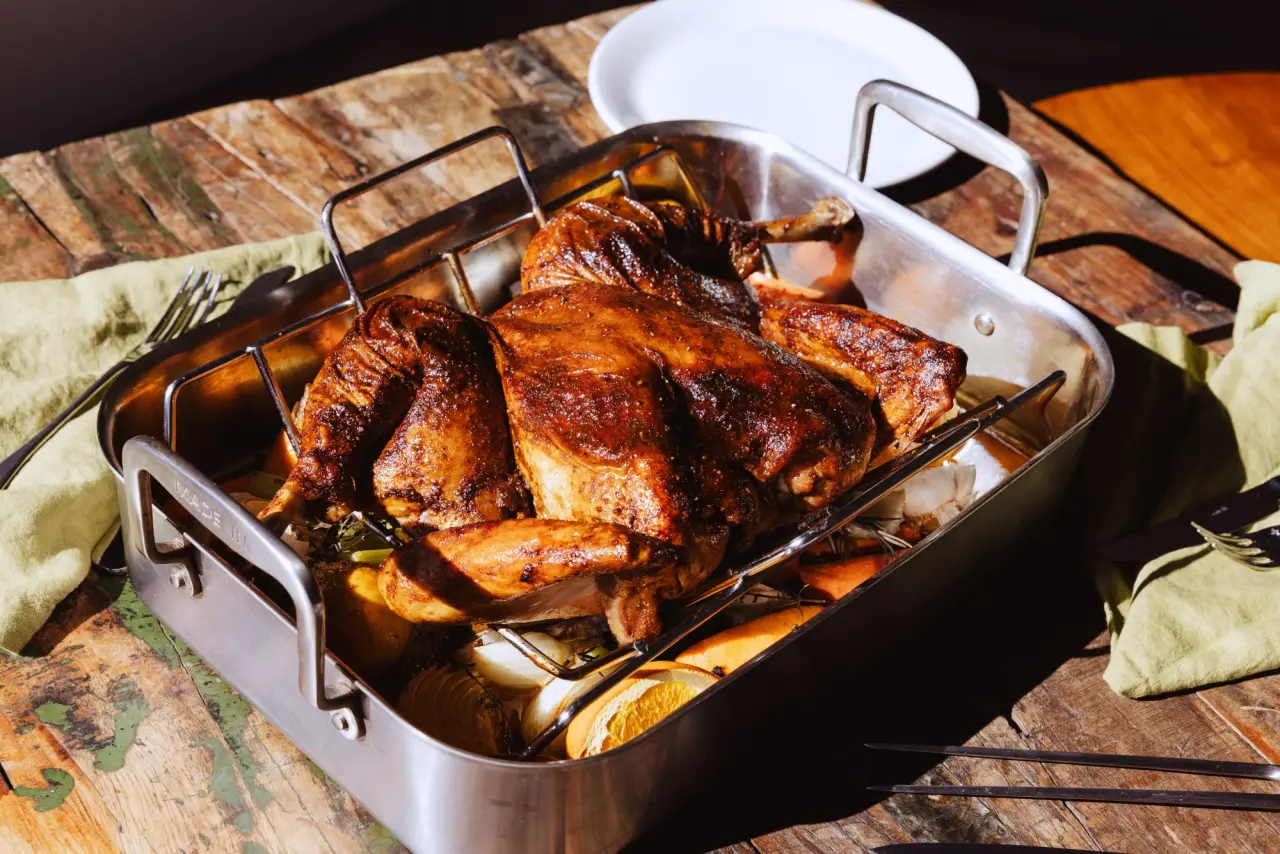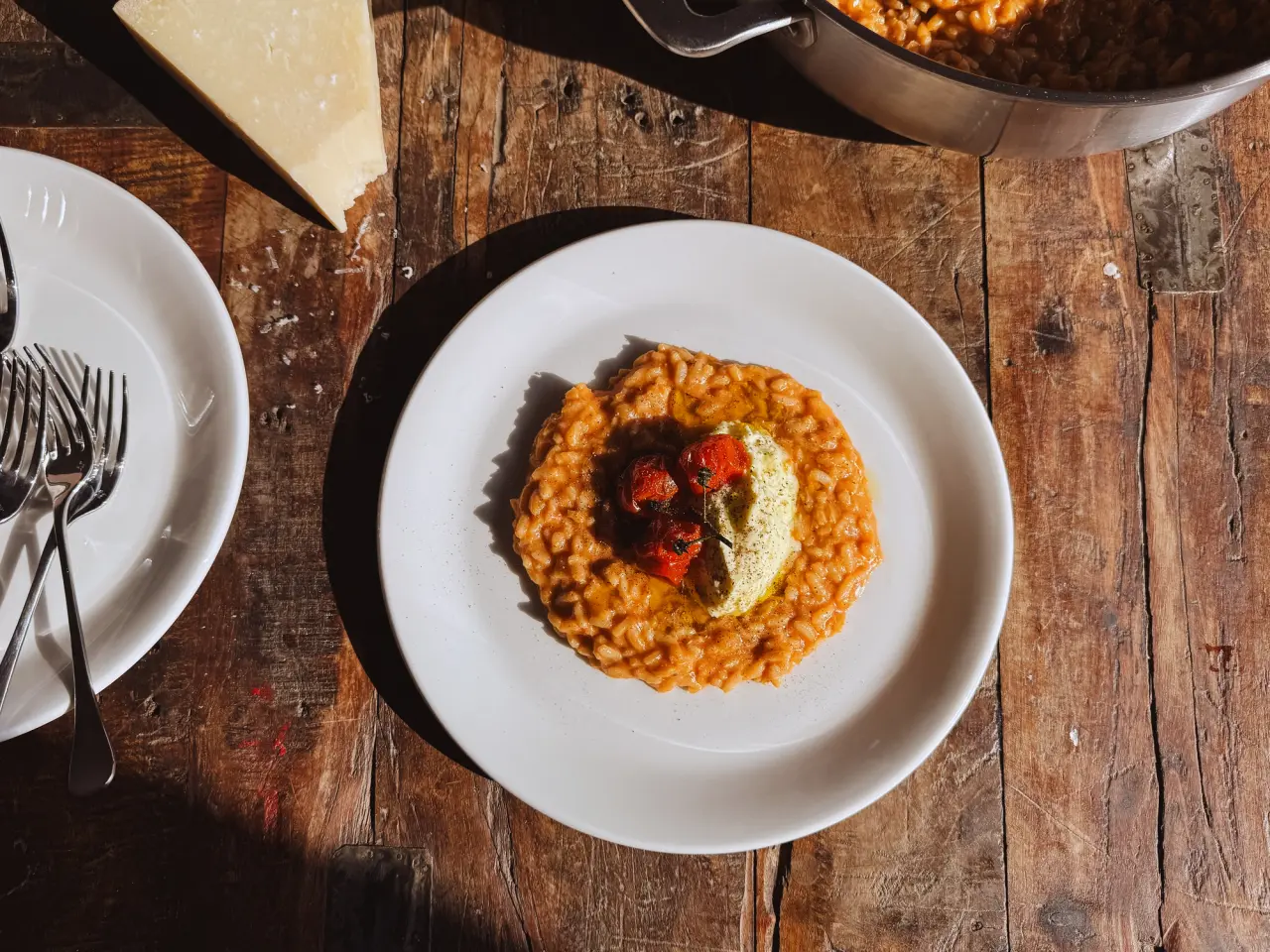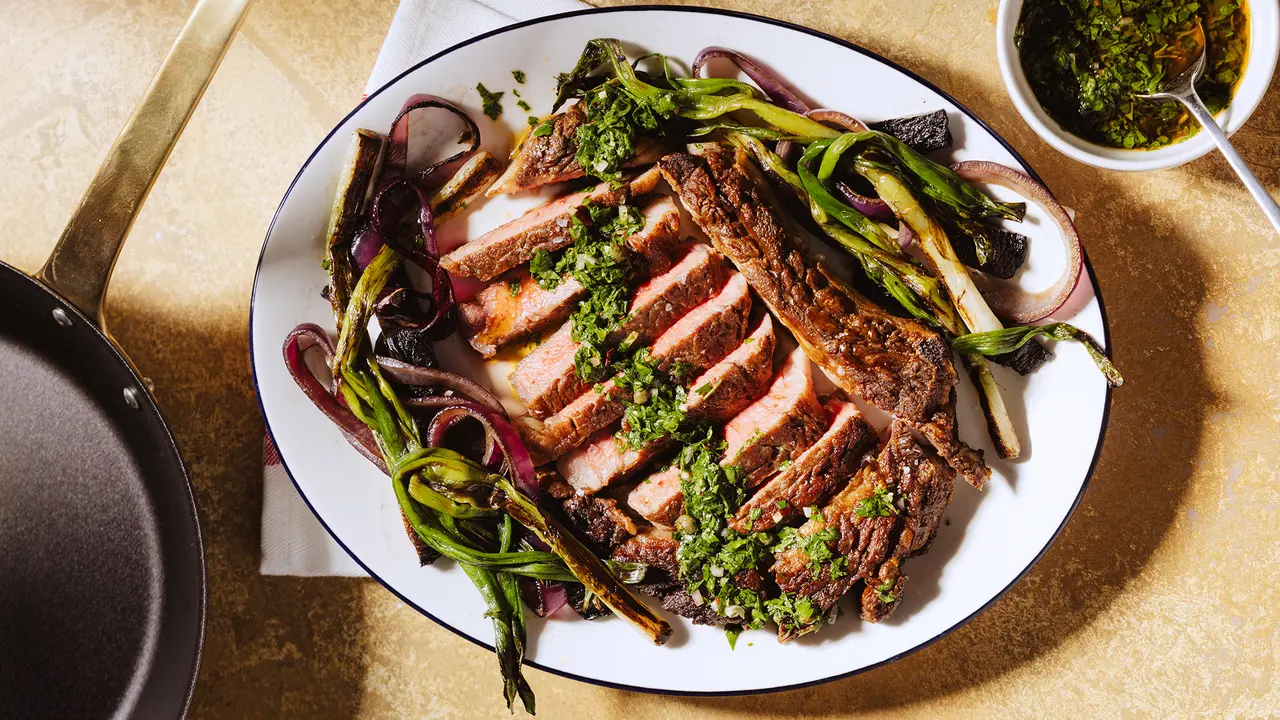Potato Pierogies with Caramelized Onions
Let these satisfyingly savory vegetarian pierogies be your new holiday tradition.
While delicious year round, pierogies (boiled Eastern European dumplings not unlike ravioli) are especially common on Polish tables around the holidays. Chef Jakub Czyszczon of Garrison in Austin favors this classic potato and caramelized onion version, but recommends taking your time for the most savory results. For humble ingredients like potatoes and onion, a little TLC is required to coax out their very best—though using a Dutch Oven will speed up the time-consuming caramelizing process. The hearty filling is encased in a forgiving, beginner-friendly dough, and then topped with yet more caramelized onions. Pairs well with almost anything but mistletoe.
Potato Pierogies with Caramelized Onions
Let these satisfyingly savory vegetarian pierogies be your new holiday tradition.
Jakub Czyszczon
- For the filling:
- For the pierogi dough:
- For serving:
- 1.
To make the filling: place peeled potatoes in a large Stock Pot, preferably fitted with a Pasta Insert. Cover with cold water and bring to a boil over high heat. Season generously with salt and lower to a simmer. Cook potatoes until tender when pierced with a knife, about 30 minutes.
- 2.
Using a Chef Knife, trim root ends and cut onions in half lengthwise, then into ¼-inch-thick slices.
- 3.
Add butter to a Dutch Oven and heat over medium. Add sliced onions and 2 ¼ tsp. salt. Cook, uncovered, stirring frequently and scraping the bottom, until beautifully caramelized and nutty amber brown in color, 30–40 minutes.
- 4.
Reserve about ¼ of the caramelized onions for serving. Add remaining onions and the drained potatoes to a large mixing bowl. Add yogurt, 1 tsp. salt, and pepper and mix with a fork, potato masher, or spatula until smooth and well-combined. Chill, uncovered, in fridge until cooled and you are ready to form the pierogies.
- 5.
To make the pierogi dough: bring 1 ⅓ cup water to a boil in a small Saucepan.
- 6.
Pour flour onto a work surface in a mound and use your fingers to create a well in the center (similar to making pasta dough). Add egg, butter, and salt into the well.
- 7.
Begin slowly incorporating mixture together with a fork, trying not to disturb flour "walls." Simultaneously add hot water into dough as you are mixing with the fork until fully combined. Once dough is solid enough to handle, switch to using your hands, and carefully knead dough until all the flour is hydrated, 3–4 minutes. The dough should be soft, pliable, and still warm from the hot water once finished. Add extra hot water if dough feels dry. Wrap dough in plastic wrap and let sit in a warm spot for at least 30 minutes. Do not refrigerate dough.
- 8.
To assemble and cook the pierogies: divide dough into 4 equal portions and cover with plastic wrap to keep from drying out. Flour a work surface and, using a rolling pin, roll out 1 portion of dough at a time to a thickness of ⅛-inch. Punch dough into rounds using a 3” glass or ring mold.
- 9.
Fill each round with a heaping tablespoon of filling and use your finger to wet the rim of half of each circle. Fold in half and work from one side to the other to pinch seams together, creating a half moon shape and pressing to release any air trapped inside. Crimp outer edge of seal with the tines of a fork, if desired. Place on a lightly floured Sheet Pan.
- 10.
Bring water to a boil over high heat in a large Stock Pot, season generously with salt, and lower to a simmer. Cook pierogi until they float, 3–4 minutes.
- 11.
Heat 4 Tbsp. butter and reserved caramelized onions in a Saute Pan or Frying Pan. Add pierogi and toss to coat. Serve pierogies with onions and butter spooned over top.





